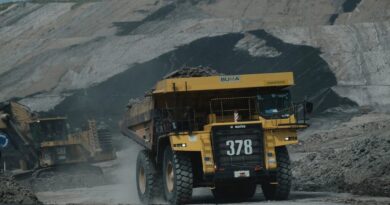Critical Minerals Shortages Could Hamper Global Energy Transition: wef
New York, USA, September 23, 2024 – A new report released by the World Economic Forum (WEF) today highlights significant challenges in securing a sustainable and equitable supply of critical minerals essential for the global energy transition. The study, developed in collaboration with McKinsey & Company, underscores the urgent need for enhanced investment, innovation, and multistakeholder collaboration to address looming supply shortages that threaten climate goals and sustainable development worldwide.
The report, Securing Minerals for the Energy Transition: Unlocking the Value Chain through Policy, Investment and Innovation, reveals that critical minerals like lithium, copper, and rare earth elements, vital for technologies such as electric vehicles and solar panels, face supply-demand imbalances. These shortages risk derailing global progress toward a clean energy future and exacerbating socioeconomic inequalities, especially in developing nations.
“Critical minerals are the backbone of the energy transition, yet the current supply shortfalls threaten to slow global climate progress,” said Roberto Bocca, Head of the Centre for Energy and Materials at the World Economic Forum.
Key Challenges in Mineral Supply Chains
As demand for critical minerals soars due to the rise of low-carbon technologies, the report identifies three primary barriers to stabilizing supply:
- Financial Hurdles: High upfront costs and the financial uncertainty surrounding early-stage mining projects hinder necessary investments.
- Regulatory Complexity: Lengthy permitting timelines, intricate regulatory frameworks, and inadequate infrastructure delay project development.
- ESG and Data Transparency Issues: A lack of standardized environmental, social, and governance (ESG) practices and insufficient data on mineral supply chains discourage investor confidence.
Michel Van Hoey, Global Co-Leader of McKinsey’s Metals & Mining practice, emphasized the importance of addressing these barriers, stating, “Developing projects with a strong business case and favorable cost structures will be critical to meeting the growing demand for critical commodities while advancing low-carbon technologies at scale.”
Proposed Solutions and Path Forward
The WEF report offers actionable solutions to bridge the gap between supply and demand, including:
- Boosting investments in mining and mineral processing innovations.
- Enhancing recycling and material substitution technologies to reduce dependency on scarce minerals.
- Streamlining permitting processes and harmonizing global ESG standards to foster responsible sourcing and transparent supply chains.
“These efforts require collaboration across industries, governments, and communities,” Bocca stressed. “Together, we can ensure these resources contribute to a sustainable and equitable future.”
The Role of Stakeholder Collaboration
The WEF’s Securing Minerals for the Energy Transition initiative, in partnership with McKinsey, seeks to bring diverse stakeholders together to implement these solutions. By integrating local communities, private sector leaders, and policymakers, the initiative aims to create resilient supply chains that meet energy transition demands while respecting environmental and social imperatives.
The report’s findings will be a focal point at the ongoing Sustainable Development Impact Meetings 2024 in New York, where over 1,000 global leaders are gathering to drive actionable progress on the United Nations Sustainable Development Goals.
Learn more about the report and the WEF’s initiatives on securing critical minerals at World Economic Forum’s website.
